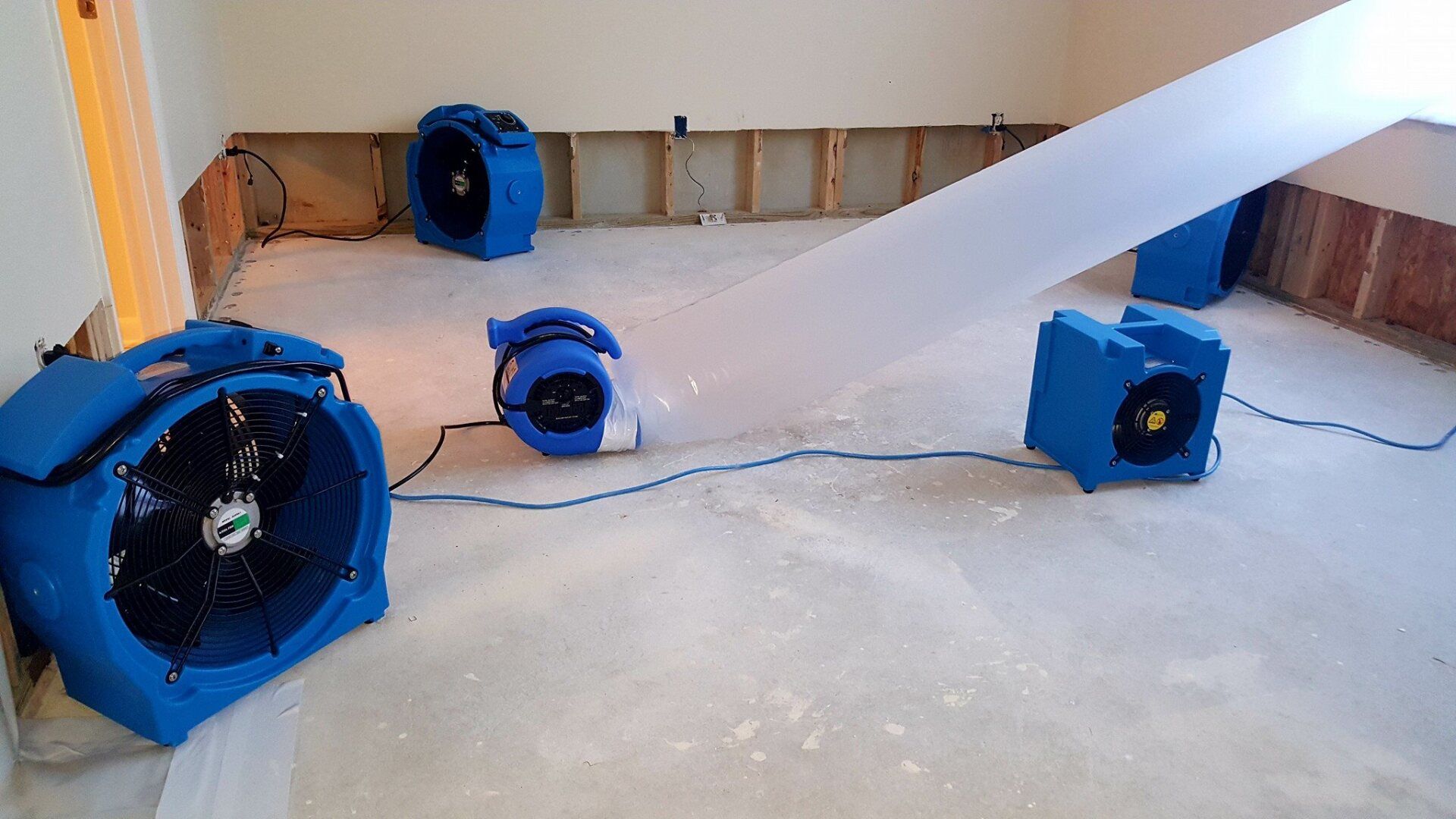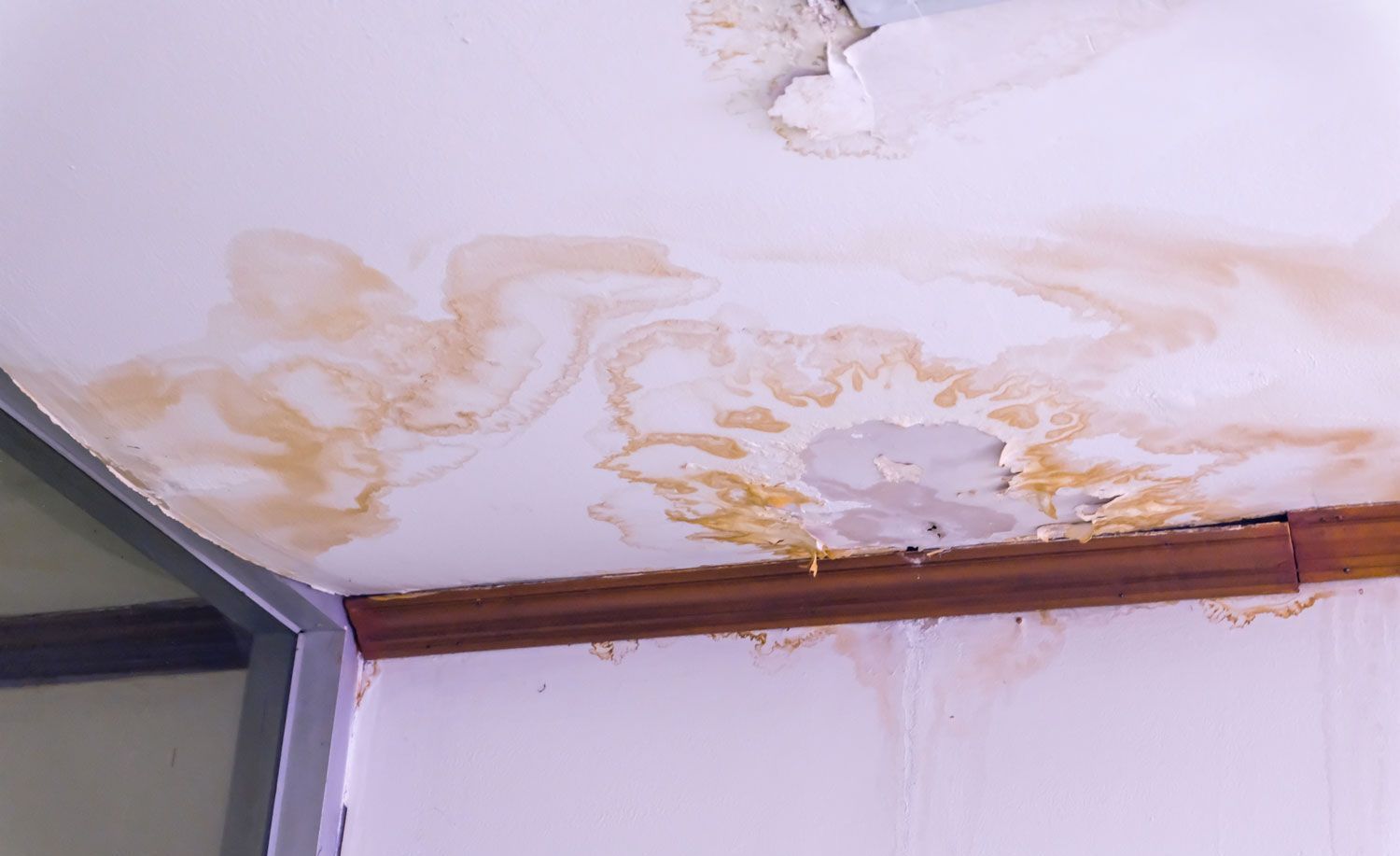What To Do If Your Attic Has Water Damage
Taylor Faulkner • January 24, 2025
The attic of a home often has numerous vulnerabilities when it comes to potential water damage but have no fear; by the end of this guide, you will have learned some of the most common causes of water damage in an attic, as well as learning what to do if you experience water damage to your attic.
Common Causes of Attic Water Damage
Some of the more common culprits includes
- Damaged roofing materials, such as damaged shingles or ridge caps
- Ice dams, which you can read about in detail in our previous blog post, "What Are Ice Dams and How Can I Prevent Them?"
- Old or inadequate insulation, which could lead to frost accumulating inside your attic
- Improper ventilation, which could cause condensation to accumulate
- HVAC and/or plumbing failures, which can lead to water damage in any area of a house, but are common culprits in attic water damages due to the more-exposed nature of most attics
How To Fix Attic Water Damage
If you can see cracks in the ceiling, wet insulation, or mold, it could be a telltale sign that you've got water damage in your attic. it's important to act quickly.
Step 1: Take Photos!
The first step is to take photos of any and all damage you can see. This will help to serve as documentation of the damage if you decide to file an insurance claim, as well as assisting our restoration professionals.
Step 2: Stop The Leak!
The next step is to stop the flow of incoming water, if applicable. In cases where the water damage is caused by a faulty appliance or pipe, you might need to shut off the water line. It is recommended that you call a plumber to assist in this process. If you cannot identify the source, you should contact a restoration professional like Faulker Restoration right away.
Step 3: Call The Experts!
The final step is to call your local restoration professionals. If you are in Marion County, Indiana or the surrounding counties, Faulkner Restoration is here 24/7, ready to dispatch our skilled team of emergency water damage technicians to assist you. Our team can help you determine if you would like to file an insurance claim, and can help assist you in that process as well. We have decades of experience working with insurance adjusters, and are ready and willing to help you navigate the process.
Water damage in an attic can be scary, and needs your immediate attention in order to prevent the damage from spreading to surrounding ceilings and walls. However, our team of experts are here to serve, and to help restore your home to it's proper condition. Don't wait, call The Experts at Faulkner Restoration today!
Contact Faulkner Restoration Today!
Faulkner Restoration will do everything we can to ensure your experience with us is excellent.
Request A FREE Estimate
Request a Free Estimate Form
Checkout Recent Post

The Tech Behind the Towels: Unpacking Psychrometrics in Water Restoration Water cleanup is a science, and that means precision. Cleanup crews—like the expert water remediation team at Faulkner Restoration—aren’t just throwing towels at damp spots. They're orchestrating a complex song and dance, using the properties of air and humidity to direct the moisture exactly where we want. Among other names, this is the science known as psychrometrics, and it’s the number-one asset water remediators use when doing a dry-out. We’ll explore a few topics such as humidity, saturation, and dew points, then walk the restoration playbook, showing you how professionals use this data to their advantage. Stick around, and you’ll read about the tech that actually works. Psychrometrics 101: What Is It and Why Do I Care? It may be a mouthful, but I promise it’s more than jargon. Psychrometrics—from the Greek words for “cold” and “measurement”—is the system of measures we use to calculate how water molecules in the air will behave, both physically and in terms of their temperature. The air we know and breathe every second is actually a mixture of gases, like oxygen, nitrogen, and carbon dioxide, plus vapors like water vapor. This mixture behaves uniquely compared to pure gases. Psychrometrics is the roadmap we use to figure out how the air and moisture will behave—and with it, we can plan, predict, and account for the movement of water. Psychrometrics usually plots the air on an XY axis: the X axis is the air temperature, and the Y axis is the humidity ratio, known as absolute humidity—the ratio of pounds of water to pounds of air. There’s another way to measure humidity, called relative humidity (RH). RH tells us how saturated the air is with water molecules and is usually expressed as a percentage. When the air cannot hold any more water, it is saturated—and instead of staying as a vapor in the air, the moisture will return to liquid water. For example, an RH of 40% means that the air is 40% saturated. When RH reaches 100%, the air is saturated, and the moisture in the air begins to condense, forming dew. RH is useful because the amount of water the air can hold before it reaches saturation changes with temperature. This means that an 80-degree room and a 60-degree room—even if they had the same number of water molecules—would have different RH values. The Air's Push and Pull: Vapor Pressure, Differentials, and Dew Points Another thing that techs must take into account with water vapor is that it exerts pressure on other gases. In other words, on a molecular level, the water molecules push each other around. The more water molecules there are, the harder they push on each other. This pushing is called “vapor pressure,” and it means that wet materials will push moisture into the drier surrounding air, creating what we call a “differential.” The bigger the differential is, the faster the water vapor will evaporate. This is why restorers use dehumidifiers to fill the area with dry air, reducing the RH of the surrounding air. If this RH is too high, it could cause the air to saturate and re-wet. One way to avoid this is to keep an eye on the dew point. Remember how I said earlier that temperature affects the amount of water needed to saturate? This is the same reason why your grass has dewdrops in the morning after a cold night—the temperature drops, and the water molecules in the air form into droplets. The temperature at which the air will become saturated is called the “dew point,” and the dew point changes with the RH of the air. Picture air like a sponge. At 70°F, it holds 55 grains per lb. Soak it with vapor from nearby drywall? Dew point plummets. RH spikes—and the structure isn’t drying like it should. The Restoration Playbook: Tools and Steps in Action Restoration professionals plot all of this data on psychrometric charts to predict how the water vapor will behave: just add some heat here, crank the airflow there, and it should dry out—like weather forecasting for your walls. This exemplifies the two-part mechanical system of the dehumidifier and air mover. The dehumidifier replaces the moist, humid air with hot, dry air. The air movers increase the vapor pressure, causing the moisture trapped in the building materials to rush out into the drier, less saturated air coming from the dehumidifier. In essence, the dehumidifier removes the moisture from the air and heats it up before spitting all that hot dry air back out—where it can soak up more moisture like a sponge, thanks to the help of the air mover. This cycle then repeats until the room is stable and dry. I hope that the reason why we use the tools we do has become a little more clear now, knowing the science behind why it works. Dehumidifiers crush that humidity, bringing it down to acceptable levels, while air movers—like fans—and even specialty devices like air injectors (used to dry hard-to-reach cavities) help keep vapor pressure. This is the delicate ballet at play behind every water damage restoration. By tweaking the heat and humidity, you can zap that moisture out from the air like magic. Our moisture meters aren’t just beeping to let us know there’s moisture—they’re whispering dew point secrets, letting us know what to do and where to do it. Here’s how we put the playbook into motion, step by step: Step 1: Plot the Baseline – Grab initial RH, dew point, and moisture readings to spot differentials and classify the water (clean vs. contaminated). Step 2: Fire Up the Duo – Dehumidifiers pull grains from the air; air movers whip vapor out of materials, targeting <60% RH. Step 3: Dial & Dry – Daily checks with thermo-hygrometers tweak the cycle—add heat if needed—until materials hit <16% moisture content. Why Psychrometrics Isn’t Optional: Your Firewall Against Disaster Psychrometrics isn’t optional—it’s the firewall against $5K mold repairs. It may seem like scientific gobbledygook, but for the trained professional, it’s the navigational chart that tells us exactly where we are, where we need to get to, and how to get there. And now, hopefully, you too, reader, have a better understanding. So, the next time you’ve got water damage, don’t just call up Joe Schmoe with the Shop Vac—go with the pro with the RH chart, like the trained professionals of Faulkner Restoration. Give us a call today at 317-782-9999, and let psychrometrics work its quiet magic on your home.

3 Common Water Damage Myths Homeowners Should Stop Believing Water damage can quickly spiral from a minor issue to a major headache if you fall for common misconceptions. Homeowners often believe myths that lead to delayed repairs, mold growth, and expensive fixes. At Faulkner Restoration, we’ve seen firsthand how misinformation can turn a small leak into a costly disaster. From thinking minor drips will dry on their own to assuming bleach eliminates all mold, these myths put your home and health at risk. Let’s debunk three widespread water damage myths with expert insights to help you protect your property. Read on to learn the truth and discover how Faulkner Restoration can restore your home quickly and safely. Myth 1: Small Leaks Don’t Require Professional Help A dripping faucet or a small puddle under the sink might seem harmless, tempting many homeowners to grab a towel and move on. Unfortunately, even minor leaks can cause significant damage by seeping into walls, floors, or insulation. Within 24-48 hours, trapped moisture can foster mold growth, which not only weakens your home’s structure but also poses health risks like allergies or respiratory issues. Ignoring these small leaks often leads to costly repairs that could have been avoided with early intervention. At Faulkner Restoration, our certified technicians use advanced tools like moisture meters to detect hidden water and assess the full extent of the damage. By addressing leaks promptly, we prevent mold and structural issues, saving you time and money. Don’t underestimate a small leak’s potential to cause big problems. Contact us for a professional assessment to ensure your home stays safe and dry. Myth 2: Bleach Kills All Mold After Water Damage When mold appears after a water leak, many homeowners turn to bleach, believing it’s a quick fix to eliminate the problem. While bleach can kill some surface mold on non-porous materials, it’s ineffective against mold hidden in porous surfaces like drywall, wood, or carpeting. These deeper spores continue to thrive, spreading through your home and potentially causing health issues like asthma or allergic reactions. DIY attempts with bleach can also worsen the problem by spreading spores or exposing you to harmful toxins. Faulkner Restoration’s certified mold remediation experts use industry-standard techniques, such as containment barriers and HEPA filtration, to safely remove mold and prevent its return. Our process ensures that all affected areas are thoroughly treated, protecting your home and family. Don’t risk incomplete mold removal—trust our team to handle the job with precision and care, restoring your home to a safe, mold-free condition. Myth 3: Drying Wet Areas with Fans Is Enough After a flood or spill, many homeowners set up household fans, thinking they’ll dry out the damage and prevent further issues. However, fans alone can’t remove moisture trapped in carpets, subfloors, or walls, where it can linger and cause mold growth or structural damage. This hidden moisture often goes unnoticed, leading to warped floors, musty odors, and costly repairs down the line. Relying solely on fans can give a false sense of security while the real damage festers. At Faulkner Restoration, we use industrial-grade dehumidifiers and air movers to thoroughly dry affected areas, ensuring no moisture remains to cause problems. Our professional drying process is fast and effective, preventing mold and preserving your home’s integrity. Don’t let hidden moisture compromise your property—call Faulkner Restoration for expert drying solutions that restore your home to its pre-damage condition. Don’t Let Myths Flood Your Home Believing water damage myths can lead to expensive repairs, health hazards, and unnecessary stress. By understanding the truth about small leaks, mold removal, and proper drying, you can make informed decisions to protect your home. Faulkner Restoration is here to help with 24/7 water damage restoration services tailored to your needs. Whether you’re facing a minor leak or major flooding, our certified team is ready to respond. Contact Faulkner Restoration today for a free inspection and let us bring your home back to safety with professional, reliable solutions.

Applying the precepts of structural drying to your home is a unique process, as every structure is shaped differently, and will dry at a different rate. There is no one single magic-bullet formula for drying, but by meeting guidelines and following protocol, both residential and commercial structures can be dried effectively and efficiently. In this blog post, we will go over some of the basic principles of applied structural drying, and how these pillars affect the drying process. Keep reading, and perhaps you'll learn something new and interesting!


